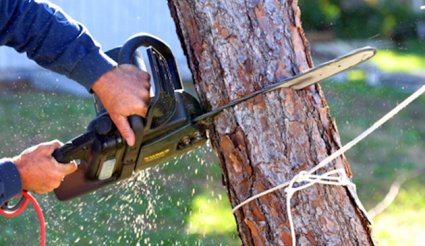Seven Signs That You May Need to Have a Tree Removed
Mature trees can be a major asset for any property, providing shade, plentiful oxygen, clean water, a home for wildlife, and natural beauty. However, when a beloved tree begins to show signs of decay or deterioration, it may be time to consider having it removed. While dying trees can often continue to live for many years, they can pose a serious hazard to nearby power lines, people and structures. The following are important signs that you should have an assessment performed by a professional arborist.
1. Trunk Damage
Vertical cracks, hollowing trunks, dead branch stubs, and unhealed wounds are often indications of potentially serious internal decay. While many tree species can survive for quite some time with a partially hollowed trunk, their lack of structural integrity makes them especially dangerous.
2. Dead and Dying Branches
When a tree's canopy consists of 25 percent or more dead or dying branches, it is a good sign that something is wrong. Make sure to have the tree examined by a professional to determine whether it needs to be removed.
3. Lopsided Illness
Dead branches that are noticeably clustered on one side of a tree could be evidence of serious root or trunk damage on that side. Such trees pose the danger of falling limbs as well as compromised stability.
4. Epicormic and Basal Sprouting
Shoots and sprouts that originate from either the base of the tree or higher up on the trunk itself are usually a response to major environmental stress, such as adjacent construction or sudden over-exposure to sunlight after forest thinning.
5. Trunk Rot and Fungal Growth
While mushrooms often grow harmlessly at the base of certain species of tree, fungi growing on the roots, trunk, or branches of the tree itself may indicate internal rot or root disease.
6. Slanting or Leaning Trees
Nearby excavations, construction, root disease, and insect predation can all cause serious root damage, leading to leaning and lopsided trees. In general, a tree that is angled more than 15 percent from the vertical should probably be removed.
7. Endangered Power Lines
Trees planted beneath power lines can pose a major fire hazard. During wet conditions, electricity can arc up to ten feet to nearby foliage, potentially causing power failure and catastrophic property damage. Due to serious electrocution risks, a professional arborist should always handle pruning, trimming, or removal of trees beneath power lines.
Even if your backyard tree has just begun to show signs of decay or deterioration, it is always a good idea to get a professional assessment as soon as possible. In addition to forestalling costly property damage and unexpected hassle, responsible tree management can prevent potentially fatal accidents.
 Consequences of Texting and Driving
Consequences of Texting and Driving
 Why is Tree Pruning Important?
Why is Tree Pruning Important?

 webforjason
webforjason